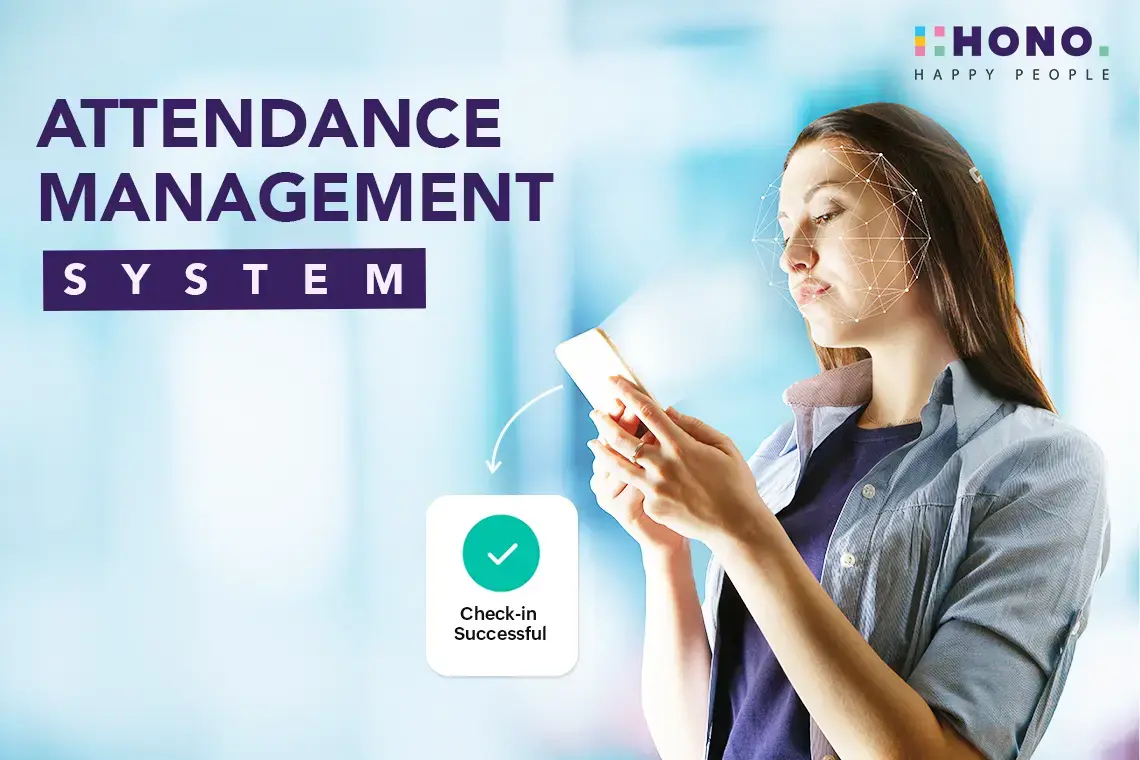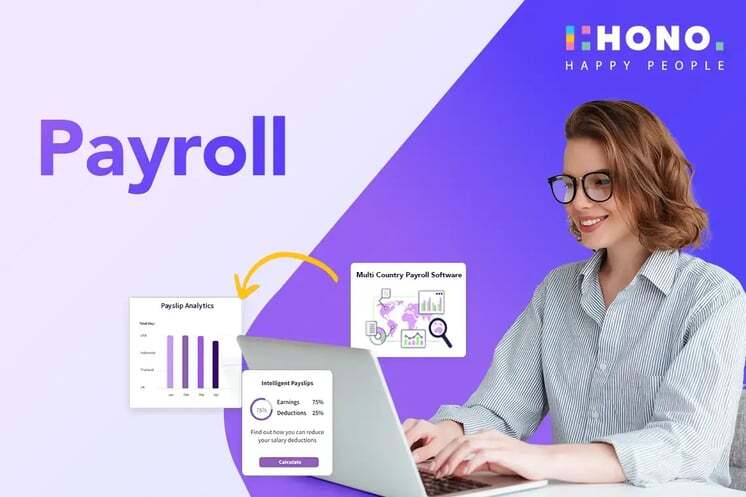A Human Resource Management System (HRMS) is an essential tool in modern HR practices, designed to automate and streamline the core functions of human resources departments. The efficiency of recruitment processes, a critical component of HR, significantly benefits from the integration of HRMS. In a landscape where the speed and quality of hiring can define a company’s success, leveraging technology to enhance these aspects is more crucial than ever. This blog aims to guide HR professionals through each step of mastering the recruitment process using an HRMS, from job postings to onboarding, ensuring they maximize the capabilities of their systems.
The Recruitment Process in Human Resource Management Systems: A Guide
7 mins

Understanding HRMS and Its Impact on Recruitment
An HRMS (Human Resource Management System) is a comprehensive software platform that combines numerous HR functions such as recruiting, training, payroll, benefits administration, and compliance, into a single package. The purpose of an HRMS is to improve the efficiency and productivity of an organization by automating manual and labor-intensive processes. The recruitment module within an HRMS is designed to automate and optimize all stages of the hiring process. According to Gartner, companies that utilize advanced HR technology, including HRMS, report up to a 30% increase in efficiency in their recruitment operations. HRMS systems enable better management of job postings, applicant tracking, and interview scheduling, which are key to attracting and retaining top talent.
Step-by-Step Guide to the Recruitment Process in HRMS
Step 1: Defining Recruitment Needs
An essential starting point in the recruitment process in HRMS is defining clear and accurate job descriptions. This step not only sets the foundation for attracting the right candidates but also aligns the recruitment process with organizational goals. HRMS platforms facilitate this by providing templates and tools to create comprehensive job descriptions that include necessary skills, qualifications, and responsibilities. By documenting these requirements in an HRMS, businesses ensure consistency and compliance across all job postings, which is crucial for setting clear expectations and attracting suitable applicants.
Step 2: Sourcing Candidates
Modern HRMS platforms excel in enhancing candidate sourcing through advanced features like job posting integrations with leading job boards and social media platforms. This integration allows HR teams to broaden their search and reach a diverse candidate pool effectively. To maximize the effectiveness of these features, HR professionals should utilize HRMS analytics to track which channels yield the best candidates and adjust their strategies accordingly. Additionally, HRMS often includes capabilities for creating and maintaining talent pools, enabling recruiters to nurture potential candidates and reduce time-to-hire for future positions.
Step 3: Managing Applications
Once candidates begin to apply, an HRMS simplifies the management of applications by automatically sorting and tracking each candidate's progress throughout the hiring process. Features such as keyword filtering and automated recognition of qualifications help in efficiently organizing candidate data. This capability not only speeds up the initial screening process but also ensures that no potential candidate is overlooked due to manual handling errors.
Step 4: Screening and Shortlisting
Automated screening tools within HRMS significantly streamline the process of identifying the most qualified candidates. By setting up precise screening criteria based on the job requirements documented earlier, HRMS can automatically filter out candidates who don’t meet the essential qualifications, thus ensuring that only the most suitable applicants are shortlisted. Best practices include regularly reviewing and updating the screening criteria to adapt to evolving job roles and market conditions.
Step 5: Interview Scheduling
Coordinating interviews can be a complex and time-consuming task, but HRMS can simplify this by automating the scheduling process. Features such as calendar integrations and real-time availability checks help avoid scheduling conflicts and ensure smooth communication between candidates and interviewers. This functionality not only saves time but also enhances the candidate experience by streamlining the scheduling process.
Step 6: Conducting Interviews
The integration of video interviewing tools in HRMS platforms has become increasingly important, especially in the context of remote hiring practices. HRMS systems facilitate the recording and storage of video interviews, allowing for better evaluation and comparison of candidates post-interview. Additionally, these tools help maintain a level of personal interaction with candidates while providing the flexibility that modern work environments demand.
Step 7: Selection and Offer Management
HRMS platforms support decision-making by allowing recruiters to compare candidates side by side based on predefined criteria and interview assessments. Once a candidate is selected, HRMS can automate the offer letter generation and distribution process, ensuring timely and professional communication. This step not only speeds up the hiring process but also reduces the administrative burden on HR teams.
Step 8: Onboarding
A successful onboarding process is crucial for employee retention and engagement. HRMS systems play a critical role here by automating the onboarding workflows, which include task assignments, document management, and initial training schedules. Setting up these processes within an HRMS ensures that all necessary steps are completed efficiently and consistently, providing a smooth transition for new hires into their roles.
By leveraging an HRMS for these essential steps, organizations can significantly enhance their HRMS recruitment processes, leading to better hiring outcomes and overall business efficiency.
Also Read: AI in the Recruitment Process: What Are the Benefits and Considerations
Leveraging HRMS for Continuous Improvement
HRMS platforms are not just tools for managing the recruitment process; they are also powerful data repositories that can provide valuable insights into hiring practices. By analyzing data collected during the recruitment process, HR professionals can identify trends, forecast hiring needs, and optimize recruitment strategies. Metrics such as time-to-fill, cost-per-hire, and candidate source effectiveness can help organizations refine their recruitment efforts to ensure they are both efficient and cost-effective. Utilizing these analytics, businesses can make data-driven decisions that enhance the recruitment process over time.
Feedback Mechanisms within HRMS
To further refine the recruitment process, it’s crucial to gather feedback from both candidates and hiring managers. Many HRMS platforms come equipped with feedback tools that can automate the collection of feedback at various stages of the hiring process. This real-time feedback can provide insights into the effectiveness of interview techniques, the clarity of job descriptions, and overall candidate experience. By continuously integrating this feedback, organizations can make iterative improvements that enhance the recruitment process and boost satisfaction among all stakeholders.
Also Read: What are the Steps in the Recruitment Process? Find Top Talent Faster
Challenges and Considerations
Adopting a new HRMS can come with several challenges, including resistance to change from staff, difficulties in data migration, and the need for training users on the new system. These issues can slow down the implementation process and affect the overall adoption of the system.
Overcoming Challenges
To ensure the successful adoption of HRMS, it is essential to involve key stakeholders early in the selection and implementation process to gain their buy-in and address any concerns they may have. Providing comprehensive training and support can help ease the transition for all users. Additionally, starting with a pilot program to iron out any issues before a full rollout can be beneficial. Clear communication about the benefits of the HRMS, such as improved efficiency and better data management, will also help in gaining widespread acceptance among employees.
Throughout this blog, we’ve explored how an HRMS can transform the recruitment process from the initial job posting to the final onboarding steps. By leveraging the power of HRMS for automating tasks, analyzing data, and gathering feedback, organizations can achieve a more efficient and effective recruitment process. The strategic implementation of HRMS not only enhances recruitment outcomes but also supports broader HR and business objectives.
For organizations looking to take their recruitment process to the next level, HONO offers a comprehensive HRMS solution that streamlines recruitment and enhances employee engagement. HONO's platform is designed to integrate seamlessly into your existing HR workflows, providing advanced analytics, automated processes, and user-friendly interfaces that make managing recruitment easier than ever.
We encourage all HR professionals to consider how the strategic use of HRMS could benefit their organizations. We invite your feedback and questions to further explore how HRMS can be effectively implemented in your recruitment strategy.
Request a Demo Now!
.png?width=70&height=70&name=Team%20HONO%20logo-01%20(1).png)
Team HONO










